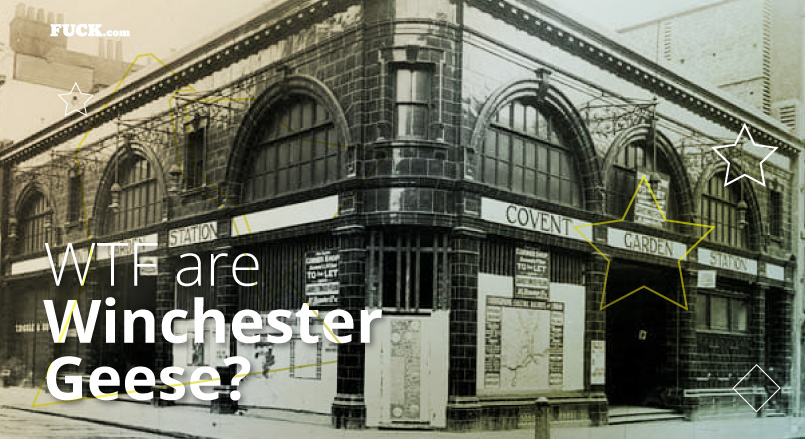England's capital is full of historical surprises around every corner and the London red light district is no different. Many upscale places today, where considered raunchy and filled with many 'unfortunate women'. Where did most of these women frequent? The answer might shock you...
WTF History Lessons Presents:
#707 London Red Light District
Step out of the Tube at Covent Garden station and you'll be swarmed by crowds of shoppers and tourists. Whether they're looking to browse among cool shops, see the National Opera House, visit the markets or take in, I dunno, the Transport Museum, they're all in a hurry and they're there no matter the time or day. But Covent Garden wasn't always a tourist hub – or at least not for these reasons.

Who were the Covent Garden Ladies?
In the 18th century, Covent Garden was one of London's most notorious red-light districts. It was so famous, in fact, that a guide to prostitutes went by the title Harris's List of Covent-Garden Ladies, with readers being expected to understand just what sort of ladies Covent Garden ladies were. Whether or not Harris' list was intended for practical use – most modern historians think it was mainly for, er, solitary reading – it definitely shows that the area was famous for its prostitution. This wasn't only an 18th-century phenomenon, either: the 17th-century guide The Wandering Whore lists Long Acre, site of the aforementioned Covent Garden Underground station, as one of the best places for men to find companionship.
Much has been made of London's history of prostitution, a subject too rich and complex to go into detail about here, but it's important to remember that no one can quite agree on the details: after all, it's not like people put “whore” on their census forms. In fact, there mostly weren't census forms. So we have to guess and estimate based on the information we have. And while that makes it impossible to know exact numbers, we can certainly pick out a few areas where prostitution was particularly rife – ironically, many of these are quite upscale areas today.
Hitching a ride on the Ratcliffe Highway...
Not all of them, of course: if I were to tell you that The Highway, the road that links Tower Hill with Limehouse, was a notorious den of vice and villainy from the 17th to the 19th centuries, you wouldn't doubt me. Known as Ratcliffe Highway at the time, it was crawling with sailors from ships docked in the Pool of London, and like most places sailors enjoy, it was regarded as pretty rough even before the gruesome Ratcliffe Highway Murders gave it a permanent bad name. This area was home base for one of the 17th-century's best-known madames, Damaris Page, whose career in vice could be an article of its own. In 1668, for instance, rioting mobs targeted Page's establishments and those of her colleagues in what would come to be called the Bawdy House Riots. Partly they were expressing good old Puritan condemnation of vice, and partly they were angry that Page was allegedly using her brothels to press-gang sailors and dockworkers. Following the riots, Page's name wound up on a petition addressing the king's mistress, Lady Castlemaine, for aid – after all, the pamphlet argued, as a fellow whore she ought to be sympathetic. Perhaps unsurprisingly, aid was not forthcoming.
A special kind of bird...
But no discussion of London prostitution would be complete without talking about Southwark and the “Winchester geese.” South of the Thames, Southwark was outside the jurisdiction of London authorities, which made it a prime spot for disreputable activity. The most famous of these disreputable activities was, er, the theatre, which is why the reconstructed Globe Theatre stands there. No one's ever tried to reconstruct a bear-pit, though, nor the rows of brothels or “stews” that also lined the south bank. The protection of Stephen Gardiner, Bishop of Winchester and chum of Henry VIII, gave the women who worked in Southwark the name “Winchester Geese.” In the end, Henry did crack down on the stews, but Southwark remained a haunt for prostitutes. The story that the Cross Bones cemetery is mainly a final resting place for these women is probably apocryphal, though.
So the next time you're walking around a completely respectable part of London, don't take it all for granted. There could be layers of history under the shiny modern surface, and a lot of it could be dirtier than you'd think.
This article was contributed by one of our fucking fabulous guest writers! Want to contribute a piece on Popcorn.dating? Then send us a message to [email protected].

Join the conversation
You are posting as a guest. If you have an account, sign in now to post with your account.
Note: Your post will require moderator approval before it will be visible.
There are no comments to display.